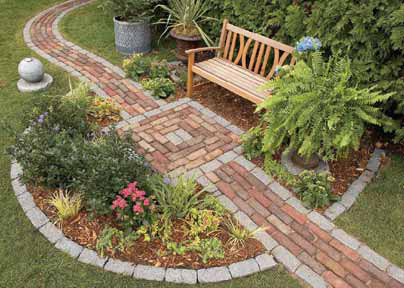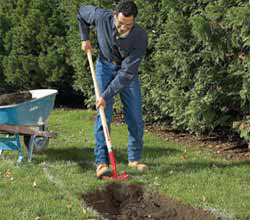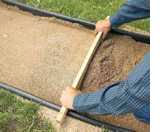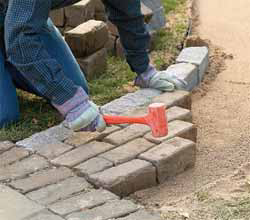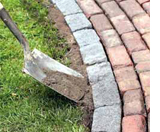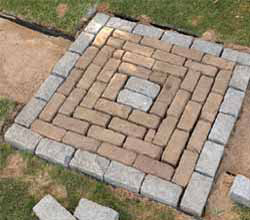Lay an informal paved path
You don't need heavy equipment and a week of work to lay an attractive and durable path. We designed this one for simplicity and ease of construction.
This path is made from old street pavers and granite cobbles set on a sand bed. But you can substitute just about any pavers or types of stones that are readily available and fit your landscape. The stone-setting techniques will even accommodate stones of varying thicknesses. You can build this path in about two weekends using a shovel, a wheelbarrow and a few inexpensive hand tools.
You’ll need a couple of special tools to do first-class work: a hand tamper and a deadblow hammer. You’ll also need a mason’s chisel and a hammer to split the pavers. Then grab your shovels and wheelbarrow and go to work. Make your path no wider than about 1 metre - anything wider will look out of scale in a garden setting.
Add a garden edging with extra cobbles to create flower beds and blend the path into the garden. Leave the cobble tops slightly above the ground level to create a nice edge for easy lawn mowing.
HERE'S HOW:
1. Lay out the path on the grass with a hosepipe and use marking paint or sand to outline. Define the sitting area first, the starting and ending points next, and then connect them.
2. Dig the path about 20cm deep between the lines. Then cut the edges vertically along the painted line on one side. Shave the bottom flat.
3. You can use landscape edging along the vertical cut edge for a neat finish, but this is not essential.
4. Fill the excavation with damp sand and compact firmly with a hand tamper.
5. Pull a level plank along the surface to level and smooth the sand. Fill and tamp any low spots.
6. Set the pavers beginning at the most visible end. Stagger the joints one-half paver. Set each one in the sand with a few whacks of a deadblow hammer.
7. Remove or add sand as needed to accommodate the uneven thickness of the cobbles and to keep the top of the path flat.
8. Measure the cuts by holding the paver in place and marking one edge. Use a square to extend the mark completely around the paver. Lay the paver on the grass, set the chisel on the mark and rap it with several times with a hammer. Do the same on all sides until it breaks.
9. Fill in along the side of the path with top-soil and tamp firmly with your foot.
10. Sweep sand over the path, working it in until all the joints are full. Save some sand to sweep into the joints after the first rain.
Seating area
Work out the seating area dimensions by roughly laying out the pattern. Set the sand base in the same manner as the path, by placing edging on two sides to serve as guides.
Because you'll be setting a bench on it, make the surface relatively level.
Lay the pavers in staggered rows (a running bond pattern) that wraps around the sides. Start at the outside and work your way around to the middle. It will take a bit of fiddling to get the pavers to fit. The informal design allows for looser spacing. Sand will fill the gaps.

